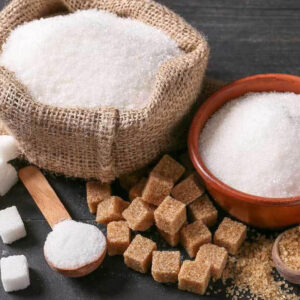In discussions of beet sugar vs cane sugar, the origin of the sugar plays a important role in its composition.
Recognizing the Nutritional Conveniences of Beet Sugar Vs Walking Cane Sugar for Health And Wellness Conscious Customers
When checking out the nutritional effects of beet sugar versus walking stick sugar, health-conscious customers locate that both selections largely are composed of sucrose and deal comparable caloric values, each adding around 16 calories per teaspoon. In spite of this resemblance, neither kind gives substantial health advantages, as they are empty of important nutrients. Checking out the wider impacts, including environmental considerations and long-term health effects of sugar consumption, might illuminate a lot more nuanced distinctions between these two sugars.
Nutritional Profile and Caloric Worth of Beetroot Sugar and Walking Stick Sugar
Although both beet sugar and walking stick sugar are largely made up of sucrose, their dietary profiles and caloric values are extremely similar. Each offers around 16 calories per tsp and is composed virtually completely of carbs, with very little quantities of healthy protein or fat. These sugars additionally do not have significant amounts of vitamins or minerals. The refinement procedure strips away the majority of the fundamental nutrients, rendering both types virtually identical in terms of nourishment. There are trace differences in the contaminations that stay after processing, which can somewhat impact the taste and shade of the sugars, but these are negligible in regards to health effect. For customers concentrating on nutritional influence, the selection between beet and cane sugar is a lot more about personal preference or possible ecological issues instead of nutritional differences. Both ought to be consumed in moderation within a balanced diet plan as a result of their high caloric web content and lack of essential nutrients (beet sugar vs cane sugar).
Environmental Effect and Sustainability of Sugar Production
While the dietary differences between beetroot sugar and walking stick sugar are marginal, their production processes offer even more substantial variations, especially in terms of environmental effect and have a peek at this website sustainability. Walking stick sugar manufacturing frequently includes substantial land usage and logging, which adds to environment devastation and biodiversity loss. This agriculture is also related to high water intake and water air pollution because of the overflow of pesticides and plant foods. In contrast, beet sugar manufacturing normally calls for much less land and can be cultivated in even more warm climates, which might minimize the requirement for watering and the associated water resource deficiency.
Nonetheless, beetroot growing is not without its environmental difficulties; it involves significant energy inputs, specifically in the northern environments where it is grown, due to the requirement for longer heating durations in sugar handling. Both sugar beetroot and sugar walking stick markets are discovering more lasting techniques, including crop rotation, chemical-free farming, and boosted waste management strategies to minimize these influences.
Wellness Effects and Recommendations for Sugar Consumption
In spite of their very little nutritional distinctions, both beet sugar and walking cane sugar can have detrimental health Recommended Site and wellness impacts when consumed in extra. High intake of either kind of sugar contributes to a series of health and wellness concerns, consisting of excessive weight, kind 2 diabetes, and heart problem. Both sugars are pure sucrose and deal no important nutrients other than calories, leading to rapid spikes in blood sugar level levels upon usage.


Conclusion
